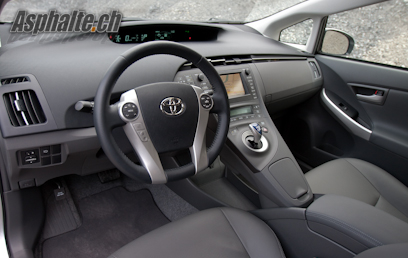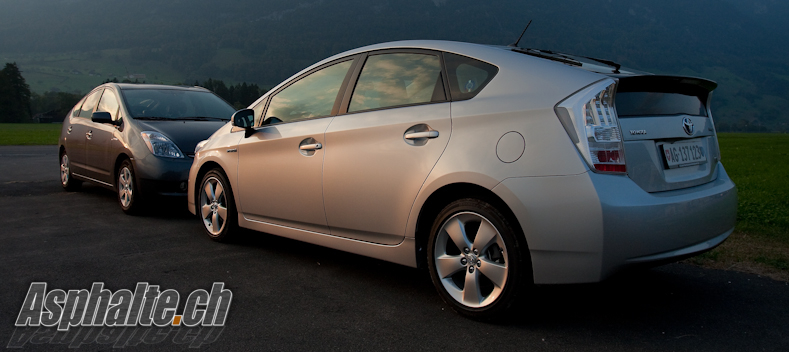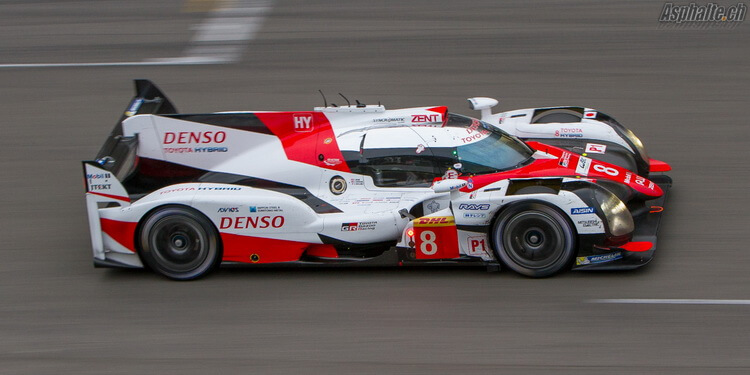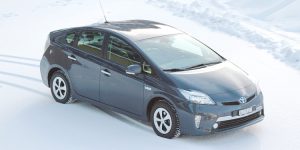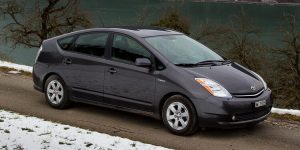Road Test: Toyota Prius 3
Interior layout has evolved with a high center console bridge spanning to the dash, leaving empty space underneath in a Volvo-like design. A questionable option that cocoons the driver and front passenger, but crowds interior space without adding practicality in the way of storage space. The main information display has migrated next to the speedo, the large display on the center console is now exclusively reserved to the satnav and audio functions if you tick that expensive box on the options list. The diagram explaining energy flows between the gasoline engine, electric engine, batteries and the wheels has lost in clarity, but an econometer now gives welcome feedback on kinetic energy recovery and allows to stay clear of the threshold where the precious Joules end up being wasted in heat through the disc brakes. A head up display conveniently shows speed, economy and satnav directions. Brush the buttons on the steering wheel and a cool overlay appears in the instrument cluster to provide feedback. Unfortunately, there isn’t much progress in the material department, with vast expenses of cheap plastics which are not quite in line with the hefty price tag of the hybrid princess.
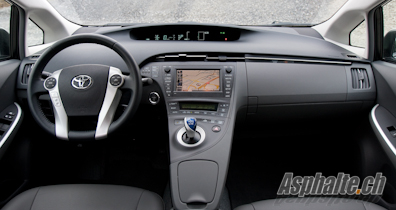
The drivetrain of the Prius III supports four driving modes. By default, an adaptive program adjusts to your driving style to optimize mileage. The EV mode allows to force pure electric drive until you either empty the batteries, exceed 45 km/h or demand too much torque from the motor. The Eco mode softens throttle response to the point where you find yourself flat out on most inclines at freeway speeds and the engine feels hopelessly underpowered. The Power mode does the opposite by sharpening the response of the Hybrid Synergy drive to your right ankle’s movements. The downshifts are brisk towards higher engine revs, providing welcome acceleration when you need it. Overall, this new drive train is objectively fit for any type of country or mountain roads, an improvement over its predecessor.
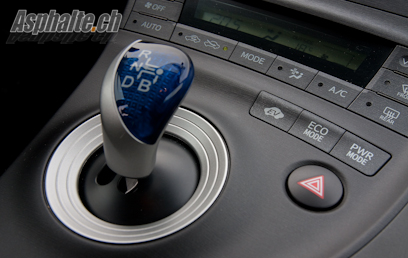
This improvement in the engine department reflects pretty deep changes under the hood. The internal combustion engine has been upgraded from 1.4 to 1.8L (1798cm3), with the output going up by 21 hp to 98. The electric engine has also been upgraded and can now develop up to 82hp. The combination is claimed at 136hp. Much less change behind the rear seats where a minor evolution of the NiMH battery pack still holds 6.5Ah of charge at a nominal 201.6V, with a peak power of 27kW. To debunk an urban legend, the batteries weigh less than 40kg: not that heavy.
Toyota’s Hybrid Synergy Drive is once again breathtakingly refined, managing seamless transitions between the different drive and recharge modes with dizzying yet completely unnoticeable haste. It is still the only twin-mode hybrid system on the market, meaning that it can power the car in pure electric mode with the engine crank completely still (up to 45 km/h from standstill), while other competitive systems use electric power to assist the gasoline unit. Even at freeway speed, the 1.8L inline four sometimes stops, leaving it to the electric unit to maintain momentum. The system dominates competition in mileage and offers the unique experience of gliding in pure electric mode, a clear differentiator over competition, Honda Insight in particular. Careful usage of the B mode (energy recycling) allows both to boost battery recharging, but also to increase engine braking. Otherwise, the Prius coasts nearly endlessly due to its low rolling resistance.
Our measurements were far off the 3.9L/100km claim (4.0 with the fancy 17 inch alloys that come standard on our Linea Sol model) in mixed cycle. Our measurement of gas consumption returned 5.72 L/100km (5.4 indicated for 53 km/h average speed), reflecting significant distances covered on alpine passes with four people on board, and freeway distances covered at a hurried pace. While it’s often possible to achieve sub-5.0 L/100km indicated averages by driving lawfully and economically, nailing the claimed 3.9 seems virtually impossible in the real world. The 0.5 L/100km improvement over the mkII Prius seems credible though based on the logbook of our long termer over more than 20’000 km.


